-
 Bitcoin
Bitcoin $79,557.5233
-4.15% -
 Ethereum
Ethereum $1,621.4541
-9.44% -
 Tether USDt
Tether USDt $0.9994
-0.02% -
 XRP
XRP $1.9973
-6.12% -
 BNB
BNB $555.1591
-6.26% -
 USDC
USDC $0.9999
0.00% -
 Solana
Solana $107.9107
-9.44% -
 Dogecoin
Dogecoin $0.1520
-9.57% -
 TRON
TRON $0.2335
-1.80% -
 Cardano
Cardano $0.5889
-9.29% -
 UNUS SED LEO
UNUS SED LEO $8.8794
-1.87% -
 Toncoin
Toncoin $3.0652
-5.67% -
 Chainlink
Chainlink $11.5147
-9.14% -
 Stellar
Stellar $0.2400
-4.01% -
 Avalanche
Avalanche $16.3792
-8.68% -
 Shiba Inu
Shiba Inu $0.0...01137
-7.20% -
 Sui
Sui $1.9576
-11.41% -
 Hedera
Hedera $0.1433
-11.17% -
 Polkadot
Polkadot $3.7257
-5.27% -
 MANTRA
MANTRA $5.9545
-5.07% -
 Litecoin
Litecoin $72.7435
-11.51% -
 Bitcoin Cash
Bitcoin Cash $274.8473
-8.05% -
 Dai
Dai $0.9999
-0.02% -
 Ethena USDe
Ethena USDe $0.9986
-0.05% -
 Bitget Token
Bitget Token $4.1799
-5.82% -
 Pi
Pi $0.5983
1.73% -
 Monero
Monero $201.0669
-5.69% -
 Hyperliquid
Hyperliquid $10.4496
-11.56% -
 Uniswap
Uniswap $5.1916
-10.64% -
 OKB
OKB $50.4885
-2.17%
What is the significance of the TVL indicator in DeFi?
TVL, a key DeFi metric, shows assets locked in protocols but can be manipulated; it's not a sole indicator of success, consider other factors like liquidity and security.
Apr 01, 2025 at 05:14 am
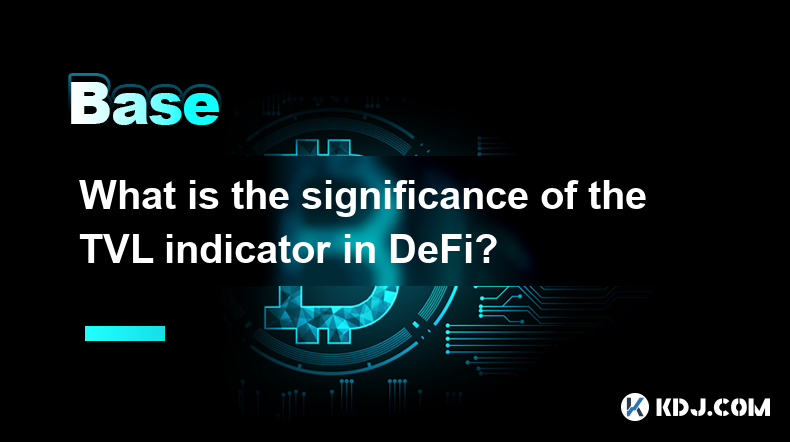
Understanding Total Value Locked (TVL) in Decentralized Finance (DeFi)
The Total Value Locked (TVL) metric is a crucial indicator in the DeFi ecosystem. It represents the total value of crypto assets deposited in a specific DeFi protocol or the entire DeFi space. This value is usually expressed in US dollars, offering a readily understandable snapshot of the protocol's size and user engagement. A higher TVL generally suggests a more robust and popular protocol, attracting more users and capital. However, it's crucial to remember that TVL isn't a perfect measure of success.
How TVL is Calculated and its Limitations
Calculating TVL involves summing up the value of all assets locked in a protocol's smart contracts. This includes tokens, stablecoins, and other cryptocurrencies deposited in lending, staking, yield farming, and other DeFi applications. The calculation often uses real-time price feeds from various cryptocurrency exchanges to convert different assets into a common USD value. A key limitation is that TVL can be manipulated, for example through the use of synthetic assets or through price inflation of the protocol's native token. It's not a foolproof indicator of a protocol's underlying health or future performance.
The Significance of TVL for Different DeFi Protocols
TVL plays a significant role in assessing the health and growth of individual DeFi protocols. For lending protocols like Aave or Compound, a high TVL indicates a large pool of funds available for lending and borrowing, driving higher potential returns for lenders and easier access to capital for borrowers. For decentralized exchanges (DEXs), a high TVL suggests significant trading volume and liquidity, attracting more traders and potentially leading to higher fees for the protocol.
For yield farming platforms, a high TVL demonstrates the attractiveness of their yield-generating strategies, indicating user confidence in the protocol's risk management and reward mechanisms. However, it’s crucial to note that a high TVL doesn't automatically translate to profitability or sustainability for the protocol. Factors like tokenomics, security audits, and team competence also play crucial roles.
TVL as a Market Indicator for the Entire DeFi Space
Beyond individual protocols, TVL serves as a significant market indicator for the entire DeFi space. Tracking the overall TVL across all major DeFi protocols provides a general sense of the sector's growth and adoption. A rising TVL suggests increasing investor confidence and growing participation in DeFi activities. Conversely, a declining TVL might signal a loss of investor confidence or a general market downturn. However, it's important to consider broader macroeconomic factors when interpreting overall TVL trends.
Interpreting TVL Changes: Growth and Decline
Significant increases in TVL often indicate positive developments within a DeFi protocol or the broader DeFi ecosystem. This could be driven by new features, successful marketing campaigns, or general market optimism. Conversely, decreases in TVL can signal a variety of factors, including security breaches, regulatory uncertainty, or a broader cryptocurrency market downturn. It’s essential to analyze the reasons behind TVL changes rather than simply reacting to the numbers themselves.
How to Use TVL Data Effectively
To use TVL data effectively, it's crucial to consider it in conjunction with other metrics. These could include:
- Liquidity: How easily can assets be bought and sold within the protocol?
- Transaction volume: How much trading activity is occurring on the platform?
- User base: How many unique users are interacting with the protocol?
- Security audits: Has the protocol undergone independent security reviews?
- Team reputation: What is the track record of the development team?
By considering these factors alongside TVL, investors and users can gain a more comprehensive understanding of a DeFi protocol's health and potential. TVL alone shouldn't be the sole basis for investment decisions.
Understanding the Risks Associated with High TVL
While a high TVL is often seen as a positive sign, it's important to understand the associated risks. A high TVL can attract malicious actors, making the protocol a more attractive target for hacks or exploits. Furthermore, a significant portion of the TVL might be concentrated in the hands of a few large investors, making the protocol vulnerable to manipulation. Always conduct thorough due diligence before investing in any DeFi protocol, regardless of its TVL.
TVL and the Future of DeFi
TVL will likely remain a key metric in the DeFi space, providing a readily accessible measure of protocol size and user engagement. However, its limitations need to be acknowledged. The development of more sophisticated and nuanced metrics, combined with a deeper understanding of the factors influencing TVL, will be crucial for navigating the complexities of the DeFi ecosystem. The future of DeFi will likely see a more holistic approach to assessing protocol performance, moving beyond reliance on a single metric like TVL.
Frequently Asked Questions
Q: Is a high TVL always a good indicator of a successful DeFi protocol?
A: No, a high TVL doesn't guarantee success. It's important to consider other factors such as security, liquidity, team reputation, and tokenomics. A high TVL can be manipulated, and a protocol with a high TVL can still fail due to various reasons.
Q: How can I find the TVL of a specific DeFi protocol?
A: Many websites and platforms, such as DeFiLlama and DefiPulse, track and display the TVL of various DeFi protocols in real-time. You can search for the specific protocol you're interested in on these platforms.
Q: What are some limitations of using TVL as a metric?
A: TVL can be manipulated, doesn't always reflect true user engagement, and can be influenced by market conditions and token price fluctuations. It doesn't provide a complete picture of a protocol's health or long-term viability.
Q: Can TVL predict the future performance of a DeFi protocol?
A: No, TVL cannot predict future performance. While a high TVL might suggest a strong current position, it doesn't guarantee future success. Other factors, such as technological innovation, market trends, and regulatory changes, also play significant roles.
Q: How does TVL differ from market capitalization?
A: Market capitalization represents the total value of a cryptocurrency's circulating supply, while TVL specifically focuses on the value of assets locked within a DeFi protocol. They are distinct metrics measuring different aspects of the crypto market.
Disclaimer:info@kdj.com
The information provided is not trading advice. kdj.com does not assume any responsibility for any investments made based on the information provided in this article. Cryptocurrencies are highly volatile and it is highly recommended that you invest with caution after thorough research!
If you believe that the content used on this website infringes your copyright, please contact us immediately (info@kdj.com) and we will delete it promptly.
- Pepe (PEPE) Weekly Performance Hints At Huge Surge
- 2025-04-07 04:15:13
- XRP Price Tanks 12.8% This Week — More Pain to Come?
- 2025-04-07 04:15:13
- XRP's Funding Rate Has Dropped to Negative 0.012%, a Level Last Seen When the Asset Traded Near $0.33
- 2025-04-07 04:10:13
- A major supply event is coming for the SUI token
- 2025-04-07 04:10:13
- Memecoin DEX PumpSwap Makes a Significant Impact, Attracting 700K Wallets and Facilitating 30M Swaps
- 2025-04-07 04:05:12
- Ronin Network (RON) Has Retraced Heavily This Year
- 2025-04-07 04:05:12
Related knowledge
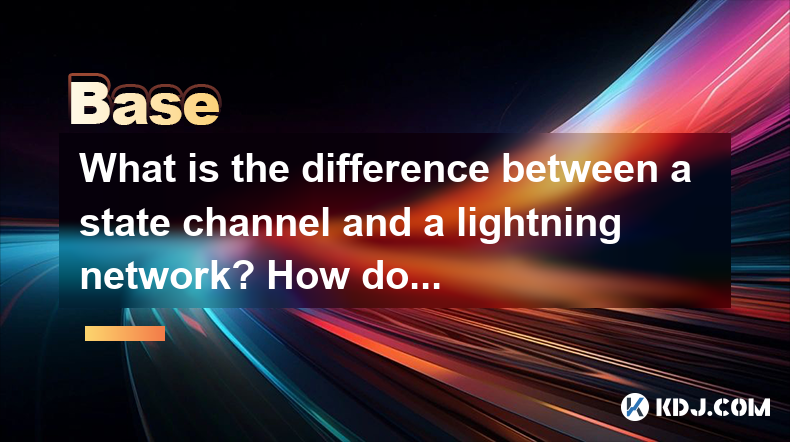
What is the difference between a state channel and a lightning network? How do they improve transaction efficiency?
Apr 05,2025 at 05:21pm
State channels and the Lightning Network are two significant technologies within the cryptocurrency ecosystem aimed at improving transaction efficiency on blockchain networks. Both solutions address the scalability issues of blockchain systems, particularly in handling a high volume of transactions quickly and with low fees. However, they operate differ...
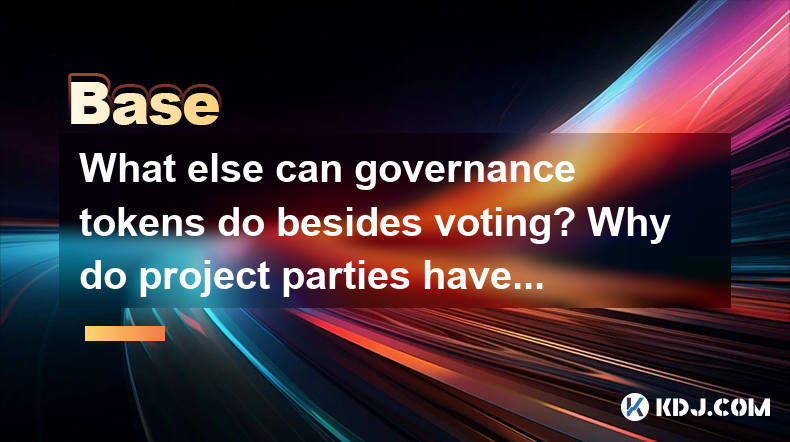
What else can governance tokens do besides voting? Why do project parties have to issue one?
Apr 06,2025 at 06:42pm
Governance tokens have become a pivotal element in the decentralized ecosystem, serving functions that extend far beyond the simple act of voting. While voting is a crucial aspect of these tokens, allowing token holders to influence the direction and decisions of a project, there are numerous other roles that governance tokens play within the cryptocurr...

Why is the oracle called the bridge between blockchain and the real world?
Apr 04,2025 at 04:00am
The concept of an oracle in the cryptocurrency and blockchain world is crucial for understanding how these decentralized systems interact with external data. The oracle is often referred to as the bridge between blockchain and the real world because it serves as a vital intermediary that fetches, verifies, and transmits off-chain data to the on-chain en...
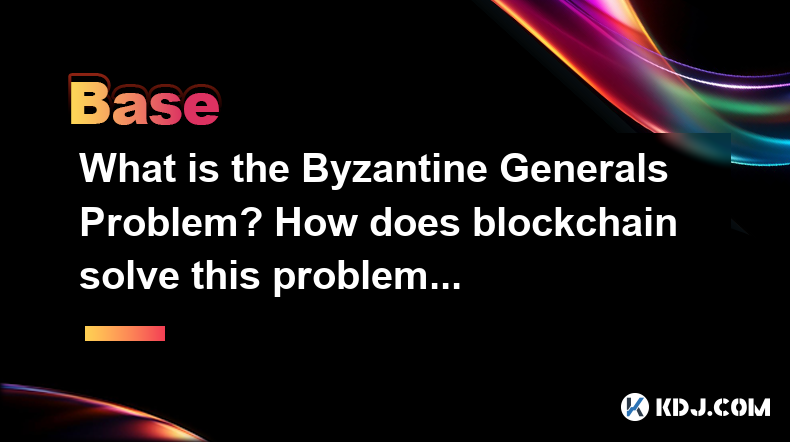
What is the Byzantine Generals Problem? How does blockchain solve this problem?
Apr 05,2025 at 06:29am
The Byzantine Generals Problem is a classic problem in the field of distributed computing and computer science, which has significant implications for the reliability and security of decentralized systems, including blockchain technology. This problem is named after a hypothetical scenario involving several generals of the Byzantine army who must coordi...
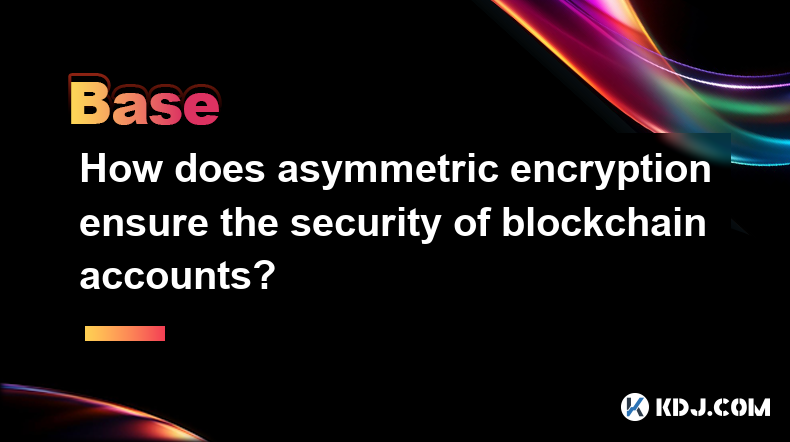
How does asymmetric encryption ensure the security of blockchain accounts?
Apr 06,2025 at 07:50am
Asymmetric encryption plays a critical role in securing blockchain accounts by providing a robust method of safeguarding private keys and ensuring secure transactions. This article delves into how asymmetric encryption works and why it is indispensable for the security of blockchain accounts. What is Asymmetric Encryption?Asymmetric encryption, also kno...

What role does the Merkle tree play in the blockchain? Why can it verify data integrity?
Apr 04,2025 at 01:29pm
The Merkle tree plays a crucial role in the blockchain, primarily due to its ability to efficiently and securely verify data integrity. This article will delve into the structure of a Merkle tree, its implementation in blockchain, and how it ensures the integrity of data. Understanding the Structure of a Merkle TreeA Merkle tree, also known as a hash tr...

What is the difference between a state channel and a lightning network? How do they improve transaction efficiency?
Apr 05,2025 at 05:21pm
State channels and the Lightning Network are two significant technologies within the cryptocurrency ecosystem aimed at improving transaction efficiency on blockchain networks. Both solutions address the scalability issues of blockchain systems, particularly in handling a high volume of transactions quickly and with low fees. However, they operate differ...

What else can governance tokens do besides voting? Why do project parties have to issue one?
Apr 06,2025 at 06:42pm
Governance tokens have become a pivotal element in the decentralized ecosystem, serving functions that extend far beyond the simple act of voting. While voting is a crucial aspect of these tokens, allowing token holders to influence the direction and decisions of a project, there are numerous other roles that governance tokens play within the cryptocurr...

Why is the oracle called the bridge between blockchain and the real world?
Apr 04,2025 at 04:00am
The concept of an oracle in the cryptocurrency and blockchain world is crucial for understanding how these decentralized systems interact with external data. The oracle is often referred to as the bridge between blockchain and the real world because it serves as a vital intermediary that fetches, verifies, and transmits off-chain data to the on-chain en...

What is the Byzantine Generals Problem? How does blockchain solve this problem?
Apr 05,2025 at 06:29am
The Byzantine Generals Problem is a classic problem in the field of distributed computing and computer science, which has significant implications for the reliability and security of decentralized systems, including blockchain technology. This problem is named after a hypothetical scenario involving several generals of the Byzantine army who must coordi...

How does asymmetric encryption ensure the security of blockchain accounts?
Apr 06,2025 at 07:50am
Asymmetric encryption plays a critical role in securing blockchain accounts by providing a robust method of safeguarding private keys and ensuring secure transactions. This article delves into how asymmetric encryption works and why it is indispensable for the security of blockchain accounts. What is Asymmetric Encryption?Asymmetric encryption, also kno...

What role does the Merkle tree play in the blockchain? Why can it verify data integrity?
Apr 04,2025 at 01:29pm
The Merkle tree plays a crucial role in the blockchain, primarily due to its ability to efficiently and securely verify data integrity. This article will delve into the structure of a Merkle tree, its implementation in blockchain, and how it ensures the integrity of data. Understanding the Structure of a Merkle TreeA Merkle tree, also known as a hash tr...
See all articles





















































































